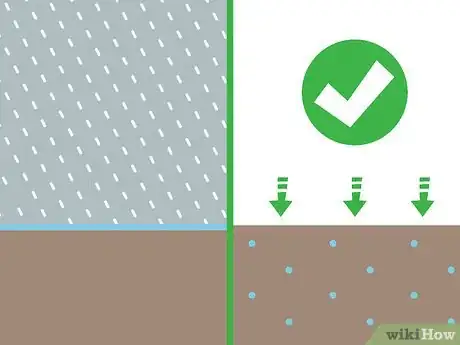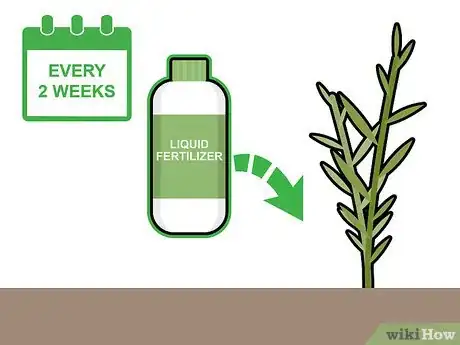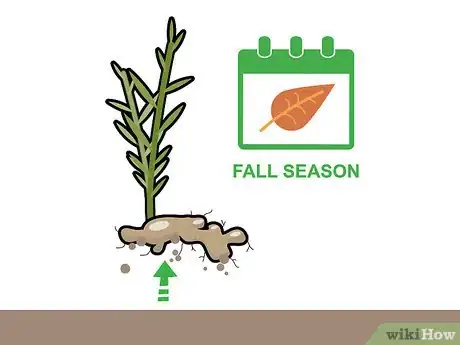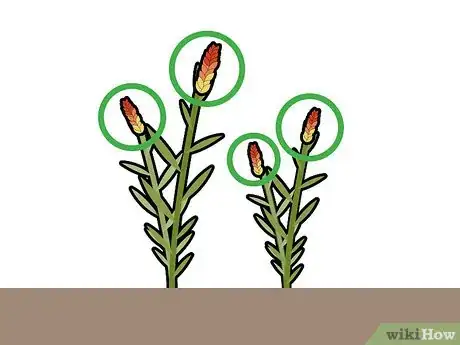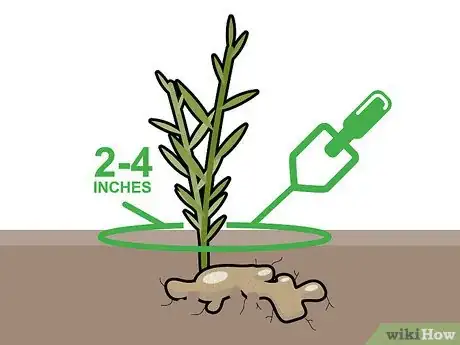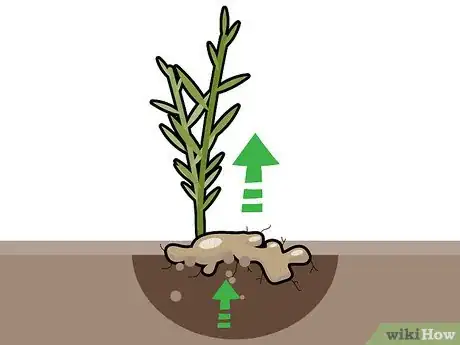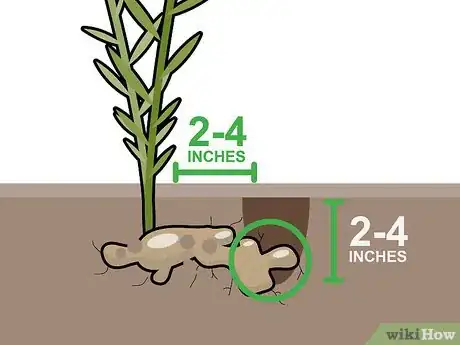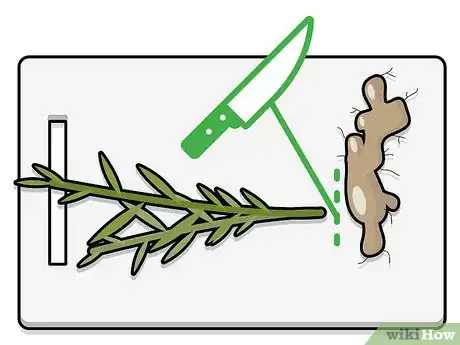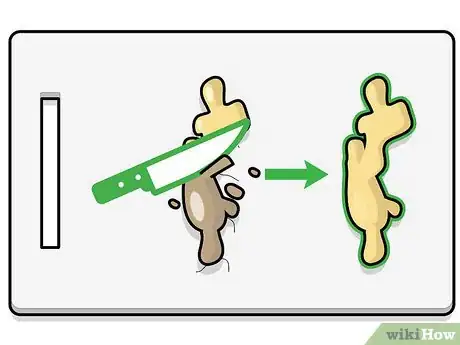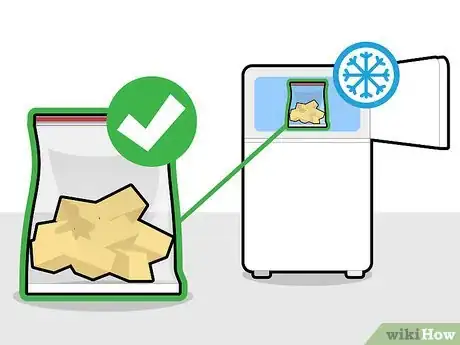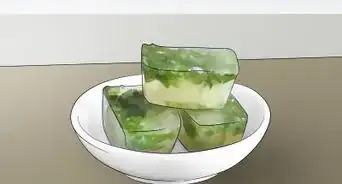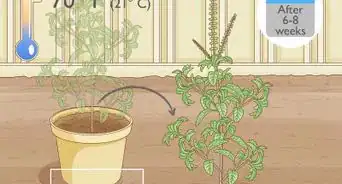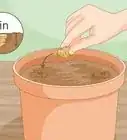This article was co-authored by Lauren Kurtz. Lauren Kurtz is a Naturalist and Horticultural Specialist. Lauren has worked for Aurora, Colorado managing the Water-Wise Garden at Aurora Municipal Center for the Water Conservation Department. She earned a BA in Environmental and Sustainability Studies from Western Michigan University in 2014.
wikiHow marks an article as reader-approved once it receives enough positive feedback. In this case, 99% of readers who voted found the article helpful, earning it our reader-approved status.
This article has been viewed 89,062 times.
Ginger is a plant known for its spicy, rich flavor. Planting ginger is actually a pretty straightforward process, but you have a few options when it comes to harvesting. Most people grow ginger for the rhizomes (or roots) which develop underground and contain the most intense flavor. To harvest ginger, you'll need to dig up the plant entirely or cut off just a piece of a rhizome. Then, after a thorough washing, your ginger will be ready to cook or freeze.[1]
Steps
Creating Good Growing Conditions
-
1Plant your ginger in well-drained soil. Ginger grows best in soil that drains easily and rarely has water sitting on its surface. Find a good spot for planting by watching how the soil responds after a rain soak. If the water pools on the surface for hours afterward, then consider another space or add more drainage.
- A ginger rhizome should be firm to the touch when pulled from the ground. If your rhizome feels soft or mushy, then it's possible that it was waterlogged in the soil.
-
2Fertilize your ginger plant every 2 weeks. When you water your ginger for the first time, mix in a slow-release fertilizer. Then, in 2-week intervals, water your plant with a liquid fertilizer. Carefully read and follow the instructions on the fertilizer packages to get the best results and to be safe.
- If there is a lot of organic matter in your soil, you won't have to fertilize.
- Try to choose an organic fertilizer to minimize the exposure to chemicals.
- Consider using fertilizer if your rhizomes are stunted. If your ginger is tiny when harvested, then it's possible that they did not receive enough nutrients.
Advertisement -
3Kill off nematodes with crop rotation or solarization. Root knot nematodes are tiny worms who can infect and damage your ginger crop. To get rid of them, once you've removed your ginger, plant a brassica genus plant, such as broccoli or kale, in the same soil. You can also heat up the soil around your ginger plant (prior to harvesting) by circling the base of the shoots with a plastic sheet to trap the sun's rays.[2]
- If your ginger rhizomes look excessively lumpy with large pits, these are signs of a nematode infestation.
- If you don't treat the soil by rotation and continue to plant in the same area, then your future ginger crops will likely suffer from these pests, too. They are based out of the soil.
Removing Ginger from the Soil
-
1Harvest your ginger in the fall season. In most climates, you'll need to plant your ginger in the early spring or summer. This gives the plant plenty of opportunities to absorb the heat and develop an extensive root system. Then, the plant will be mature and ready to remove from the ground by the middle or end of the fall months.
- A good growing estimate is that your plants will start to develop roots after 2 months. They can be harvested at any stage of maturity, but they are best after 8-10 months.[3]
-
2Wait for your ginger to finish flowering. Most ginger varieties will be mature and ready to harvest after they've completed a flowering cycle. You'll notice that the flowers will die off and fall away from the plant. Then, the leaves will dry out and do the same.
- Different varieties of ginger produce flowers of varying colors.
-
3Use a hand trowel to dig a circle around the green shoots. Use a trowel and your hands to dig 2 to 4 inches (5.1 to 10.2 cm) to the side of the sprouts in a circle. Keep digging down until you reach the rhizome.[4]
- The rhizome should be pretty easy to spot in the soil, as it will appear white or a light brown against the darker color of the dirt.
- Most ginger rhizomes sit about 2 to 4 inches (5.1 to 10.2 cm) deep, so you won't have to dig for very long.
-
4Pull the ginger plant out of the ground. Once you've exposed the root system, use your trowel to gently leverage the entire plant out of the ground. If you happen to break apart pieces of the root when pulling upwards, it's okay. Use your trowel to dig those broken sections out of the soil.[5]
- Grab and firmly pull the green shoots of the plant to help you remove it from the dirt.
-
5Dig out a single piece of ginger instead of the whole rhizome. Pick a spot 2 to 4 inches (5.1 to 10.2 cm) away from the green shoots and make a small hole 2 to 4 inches (5.1 to 10.2 cm) down. Look for a rhizome while you are digging and if you locate one, use your trowel to slice off an end piece. Then, refill your hole with dirt and the ginger will continue to mature and grow.[6]
- This is a great way to quickly and cleanly get ginger for a meal. It only takes minutes and doesn't harm the plant.
- If you don't find a rhizome with your initial small hole, dig slightly to one side or another.
Storing and Cooking Ginger
-
1Wash off your harvested ginger with warm water. Hold the entire ginger plant under a stream of warm water and scrub it vigorously with your hands or a clean scrub brush. Ginger can be tough to clean due to its unusual shape, so make sure that you wash off all of the nooks and crannies.
- If you are worried that it isn't clean enough, let it dry for a few minutes and repeat the process.
- For an even greater level of cleanliness, use a vegetable wash available at your local grocery or gardening store.
-
2Cut the shoots away from the rhizome root with a knife. Place the entire chunk of ginger on a cutting board and cleanly separate the 2 sections. You can either discard the shoots or use them as a cooking garnish. Set aside the rhizome for preparation for cooking or storing.[7]
- Prepare ginger shoots in the same way that you'd do with green onions. Use a sharp knife to chop the shoots into tiny pieces. Then, place a few pinches on top of food as a garnish to give it a mild taste of ginger.
-
3Peel off the skin with a paring knife prior to cooking. Place your ginger on a cutting board. Hold it firmly with 1 hand and use the other hand to hold the knife. Slide the knife's blade just under the rough outer skin and remove it in strips. Your goal is to expose the lighter colored flesh underneath.
- Because of the shape of ginger rhizomes you can expect to make many short cuts, instead of a few long smooth ones. Don't worry about how it looks, just keep going.
- When you are finished, hold the peeled ginger under the water to rinse off any dirt or debris.
-
4Freeze any remaining ginger in 1 inch (2.5 cm) chunks. Place your unpeeled ginger root on a cutting board and cut it into cubes. Then, arrange the pieces in a single layer on a cookie sheet. Freeze them, uncovered, for 1-2 hours. Remove the cubes and place them into freezer bags for storage.[8]
- When preserved this way your ginger cubes can stay fresh for 3-4 months.
- Another benefit of this method is that you can take out single pieces to use for recipes without wasting the rest of the ginger.
Community Q&A
-
QuestionMust rhizomes be lifted annually, or can they be left to over winter?
 NinoxTop AnswererYou can let the rhizomes over winter, but you must be aware that the taste will be less subtle and far more prickly.
NinoxTop AnswererYou can let the rhizomes over winter, but you must be aware that the taste will be less subtle and far more prickly.
Warnings
- If you have a poor or damaged initial crop of ginger, reevaluate your planting conditions and try again. You may even want to plant a few ginger sprouts indoors.⧼thumbs_response⧽
References
- ↑ https://www.gardeningknowhow.com/edible/herbs/ginger/growing-ginger.htm
- ↑ http://www.fao.org/3/ca5775en/CA5775EN.pdf
- ↑ https://agrilifeextension.tamu.edu/library/gardening/ginger/
- ↑ https://www.gardeningchannel.com/how-to-grow-ginger-in-a-container/
- ↑ https://www.gardeningchannel.com/how-to-grow-ginger-in-a-container/
- ↑ https://www.gardeningchannel.com/how-to-grow-ginger-in-a-container/
- ↑ http://homeguides.sfgate.com/part-ginger-plant-eat-74002.html
- ↑ https://www.thespruceeats.com/ways-to-preserve-ginger-1327674
